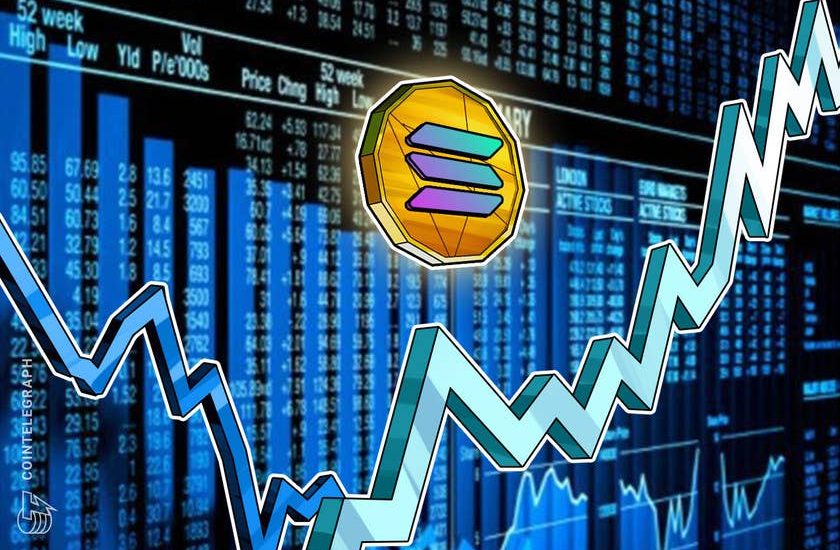- September 25, 2021
- Posted by: admin
- Category: BitCoin, Blockchain, Cryptocurrency, Investments


SOL’s futures open interest recently hit $1 billion and while the recent price swing liquidated leveraged longs, data suggests the short-term top is not a bearish trend reversal.
Solana (SOL) reached a $216 all-time high on Sept. 9 after rallying 508% since Aug. The bull run caused some analysts to project a $500 target which would translate to a $150 billion market capitalization.
It is worth noting that during SOL’s rally, the Ethereum network’s average transaction fee had surpassed $40. Surging interest in the NFT market accelerated investors’ transition to Solana, which was boosted by FTX’s NFT marketplace launch on Sept. 6.

The above chart shows SOL’s two-month performance compared to Avalanche (AVAX) and Cosmos (ATOM). Both are fighting for the same decentralized application user-base and offer faster and cheaper transactions compared to Ethereum (ETH).
Major players in the industry also invested in Solana’s ecosystem due to its potential against Ethereum. In June, Andreessen Horowitz and Polychain Capital led a $314-million funding round in Solana Labs, which was also funded by venture capital firm Andreessen Horowitz, Polychain Capital and Alameda Research.
Is Solana’s outage weighing on SOL price?
At SALT Conference 2021, Solana founder and CEO Anatoly Yakovenko told Cointelegraph that the network “is optimized for a specific use case: online central limit order book, a trading method used by exchanges that matches bids with offers. It was designed for market makers who need to submit millions of transactions per day.”
Yakovenko then added: “There are Pareto efficiency tradeoffs. If I optimize for hash power security, that means I can’t have a lot of TPS. You have to pick one or the other.”
Curiously, on Sept. 14, the Solana network experienced an outage that lasted over 12 hours. The team explained that a large increase in transaction load to 400,000 per second had overwhelmed the network, creating a denial-of-service that caused validators to start forking.

Despite the recent setback, Solana futures markets aggregate open interest sits at $1 billion, a 640% increase in two months. This figure makes Solana’s derivatives market the third largest, behind Bitcoin (BTC) and Ether. This data confirms investors’ interest, but it can’t be deemed bullish because futures buyers (longs) and sellers (shorts) are matched at all times.
Derivatives markets point toward a balanced situation
To answer this question, one must analyze the funding rate. Perpetual contracts, also known as inverse swaps, have an embedded rate usually charged every eight hours. This fee ensures there are no exchange risk imbalances. A positive funding rate indicates that longs (buyers) are the ones demanding more leverage.
However, the opposite situation occurs when shorts (sellers) require additional leverage, and this causes the funding rate to turn negative.

As depicted above, the eight-hour fee reached a 0.12% peak on Sept. 5, which is equivalent to 2.5% per week. This momentary spike seized rapidly as SOL faced extreme volatility on Sept. 7. After peaking at $195, the SOL price crashed by 35% within 9 hours and liquidated leveraged positions, leading to the current balance between the longs and shorts.
Data shows no evidence of investors rushing to add leveraged long positions despite the current $1 billion open interest. Moreover, considering the 410% gain in the last two months, traders have reason to fear further downside because Bitcoin has also failed to break the $50,000 psychological barrier and it is yet to confirm if the recent sub-$40,000 dip was the short-term bottom.
The views and opinions expressed here are solely those of the author and do not necessarily reflect the views of Cointelegraph. Every investment and trading move involves risk. You should conduct your own research when making a decision.
